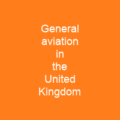Air traffic control specialists, abbreviated ATCS, are personnel responsible for the safe, orderly, and expeditious flow of air traffic. They monitor the position, speed, and altitude of aircraft in their assigned airspace visually and by radar, and give directions to the pilots by radio. The ATC profession is consistently regarded around the world as one of the most mentally challenging careers.
About Air traffic controller in brief

Although local languages are used in ATC communications, the default language of aviation worldwide is Aviation English. Most trainee controllers begin work in their twenties and retire in their fifties. This is due to an FAA requirement that trainees begin their training at the Academy no later than their 31st birthday, and face mandatory retirement at age 56. During busier times, there may also be a second Area controller assigned to the same area in order to assist the R-side controller. This can be done with the same radio frequency as the first Area controller. During times of increased air traffic, a third Area controller may be needed to assist with radio communications without the same frequency or to assist in the same way as the second Area Controller. Controllers who do not speak English as a first language are generally expected to show a certain minimum level of competency. In most nations they are known as \”D-side, or colloquially, in the US, as a ‘center’ or ‘R-side’ ATCOs are generally individuals who are well organized, are quick with numeric computations and mathematics, have assertive and firm decision-making skills, are able to maintain their composure under pressure.
You want to know more about Air traffic controller?
This page is based on the article Air traffic controller published in Wikipedia (as of Nov. 18, 2020) and was automatically summarized using artificial intelligence.







